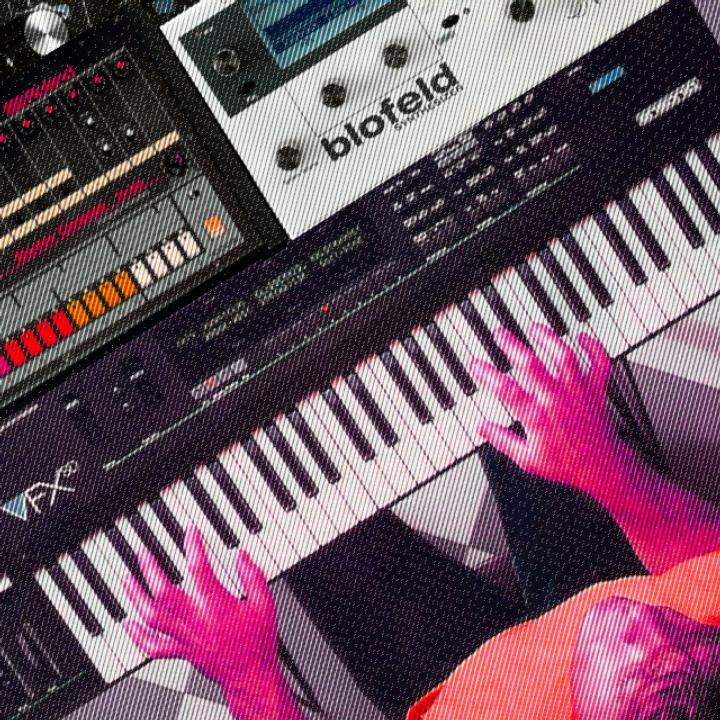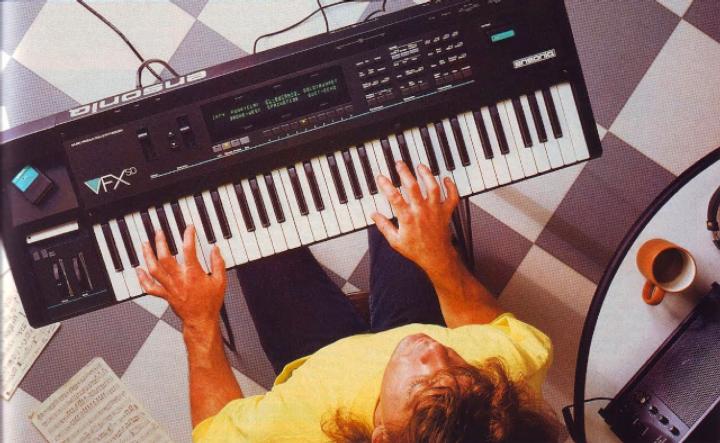6 Instruments Fatally Flawed at Release
US These synths took a little time to reach their potential 12/04/24
Not every synth is a winner right out of the gate. Here are a few examples of synths that took a little longer to reach classic status.
1. Minimoog Voyager
2002's Voyager is without a doubt, a classic and flexible Moog instrument. By marrying the classic 3 VCO architecture with dual filters and preset memory, Moog created a synth that was popular both live and in the studio. However, trouble was afoot during mid-2010 and January 2013, when the instrument's analog boards became populated with faulty IC's.
The intermittent nature of these faulty IC's was not captured during our Total Quality Control program at the factory.
These IC's caused all sorts of issues, including subsonic or inaudible oscillators, and further problems with the instrument's filters, envelopes and modulation bus. Thankfully, Moog offered to service the faulty instruments, so all's well that ends well!
2. Waldorf Blofeld

2007's Blofeld is something of an Enigma; the little synth that could - you can still buy them new even today! Despite the small size, Blofeld's engine is remarkably deep and can pull off tricks that it's younger siblings Iridium, M & Quantum cannot. Try FM'ing a lowpass filter with a string sample on most synths! (It sounds really cool by the way).
Some teething issues were solved by a passionate fan-base - for instance, the instrument is overly quiet. No problem, just use the onboard tube distortion and turn it up only slightly, resulting in a volume boost. But there were a couple of issues with no easy solution.
The encoders were known to fail over time - becoming erratic and unsuitable for programming. A firmware update fixed this behaviour somewhat, but many owners opt to either service or completely replace the parts. Firmware trickery has reportedly not yet solved a MIDI timing bug, should you try to sync the Blofeld's arpeggiator to an external source.
It's still an amazingly versatile synth for the money though. Additionally, one anonymous forum user suggested this workaround. I'm personally ok to sequence externally, but this info may be of use to you:
I was able to clean up my ARPS big time. Take the MIDI Clock that would be going to the Blofeld Load this into a MIDI Solutions Event Processor (Approx £160). Filter ALL Midi Events. Map Timing Clock to Timing Clock. It's like a new synth.
3. Ensoniq VFX

I love my VFX; Mine's the SDII model which has extra drum and piano samples. The VFX keyboards, I guess, are technically ROMplers - ROM samples run through non-resonant filters ala the Korg M1. But unlike Korg's 1988 vanilla synth, the VFX adds a bunch of unique options for sound designers.
A patch has 6 layers, each of which can be a sample or "transwave" (ie a wavetable). One waveform (in the varied, largely synthetic ROM) is actually the entire wave ROM of the instrument, played as one long sample - you can even choose a start and end loop point within this large waveform. Great, accidental, cyclic wavetable experiments then run into the aforementioned non-resonant filter, plus a VCA with plenty of modulation possibilities. The final stage is effects - wonderfully rich delays, chorus and reverb which can also be modulated to a degree.
The hardware can be kind of shoddy though. Many a VFX has refused to boot, instead displaying a keyboard "calibration error" message on the cyan VFD display. The culprit is a dodgy connection between the two halves of the keyboard assembly. You could sometimes get a problematic machine to boot by standing it up and twisting it a little - yes, this was official advice! But most people choose to manually bridge the connections using wires. Not the prettiest solution, but a resilient one!

4. Moog MemoryMoog
1982's MemoryMoog Poly-synth makes a serious impression both physically and sonically! The instrument has a reputation of being a little high maintenance though, shall we say? Synthwizard spoke of the instrument in 2017:
The memorymoog was more or less rushed to the market. This can be noted by the fact that for one, it uses the polymoog's "faratron" power supply, and that the board interconnects leave so so so much to be desired. The memorymoog was also subject to many field changes in which the schematics were never really updated. In a way you could say it was ahead of it's time, as today designers rely on releasing broken products just to offer "updates" to the end user via software updates. The original memorymoog (not plus model) initially suffered from very bad tuning stability HOWEVER most of these memorymoogs did receive the auto tune update, and for that reason alone as very comparable, and often more desirable than a plus model. Moog did also end up releasing a sequencer/midi retrofit, which was an optional update for the standard memorymoog, and a stock feature of the plus model. This should dispel the myth that the plus is more reliable than a standard model that contains the auto tune update. In other words, the plus simply means two things: 1. The auto tune update was installed at the factory (though this is true of many non-plus memorymoog') and 2. Has the sequencer/midi board from the factory (which was of course an optional upgrade for non-plus memorymoog owners).
As a result of the rushed design, the memorymoog did contain some miscalculations and crash-prone firmware. To fix this, the memorymoog was essentially revamped by Rudi Linhard of Lintronics, who created what he calls the LAMM memorymoog. LAMM stands for Lintronics Advanced MemoryMoog. The LAMM was only installed by Rudi in Germany or by Bob Moog's new company Big Briar. Soon after though, the LAMM could and can only be performed by Rudi in Germany. The LAMM fixes some miscalculations in the electronics, updates the firmware, changes 100's of failure-prone parts, updates the midi capabilities (greatly), adds stereo outputs, and ultimately brings the memorymoog to the highest level of reliability.
Read more here: https://lasyntharchive.com/2017/11/22/the-memorymoog-setting-the-record-straight/
5. DSI PolyEvolver
The PolyEvolver is an exciting instrument. You can think of it like a cross between a Prophet '08 CEM-based synth and a (trashier than normal) Prophet VS - with gobs of modulation and sequencing. The earlier release had it's own skipping encoder issues though, resulting in a later pot edition (PE). There's a bigger issue for grammar pedants though - the word "Filter" is spelled incorrectly on the instrument's panel!

6. TR-808
"What!?" You say? This one's a bit of fun, and proof that flaws can sometimes make an instrument special. For the 808, Roland founder Ikutaro Kakehashi chose transistors that had been rejected by the manufacturer, apparently for their specific sound. The Secret Life of Synthesizers explains:
Manufacturers tested each batch, graded the parts depending upon their electrical characteristics and marked them appropriately before shipping them out. From any given batch several different transistor part numbers might emerge depending upon how they performed. Some were so different than expected that they were rejected altogether and discarded. They may not be bad, they are still functional transistors for example but they just don't fit the characteristics of any part number the company's catalogue and so were dumped.
No other transistor or Zener diode that has the exact noise spectral profile and output level of the 2SC828-RNZ transistors from the specific 1970's batch that was used in the production of the TR-808. If the transistor fails in a TR-808 it must only be replaced with a transistor from that original batch or it will no longer sound like a healthy TR-808. When Roland ran out of them they had to discontinue production of the instrument because the noise characteristic of these transistors is crucial to the all important snare and hand clap sounds and that white noise is also then filtered into pink noise for other sounds in the instrument. If you put a standard 2SC828-R into a TR-808 in place of the noise selected part the sound completely changes.
Check out the article here: The rejected transistor at the heart of the iconic Roland TR-808. (secretlifeofsynthesizers.com)
It could therefore be argued that the TR-808 is flawed by design, I doubt this information will affect vintage prices though!
Posted by MagicalSynthAdventure an expert in synthesis technology from last Century and Amiga enthusiast.
< More News: Like This
- The History of Drum Machines 26-Apr-24
- Neutone Morpho V1 Released 26-Apr-24
- The MiniMoog Book Gets Funded 25-Apr-24
- Avid's Sibelius & Bad Interface Design 25-Apr-24
- Why Do Bells Sound Out of Tune? 25-Apr-24
Even more news...
Want Our Newsletter?
More...
Revisions that turned synths into brand new machines






